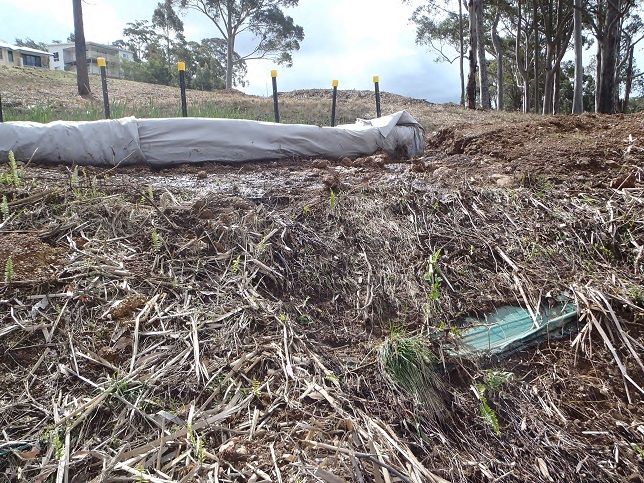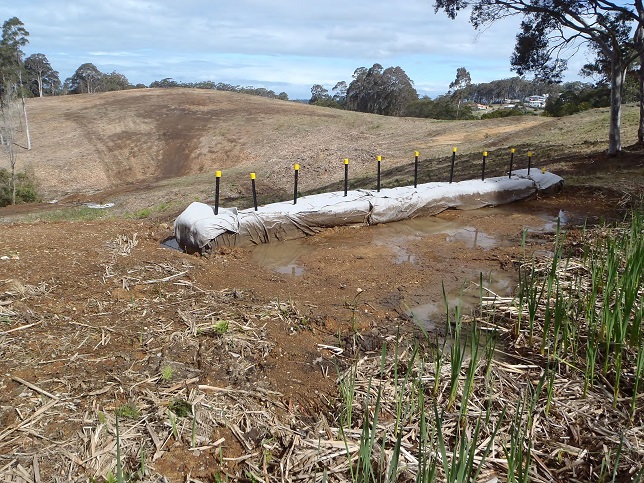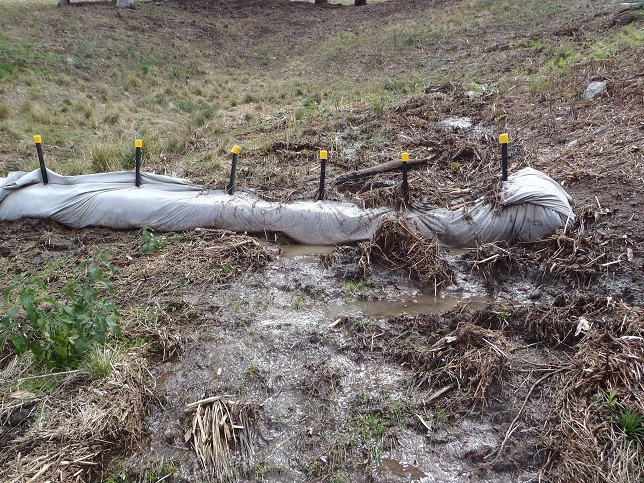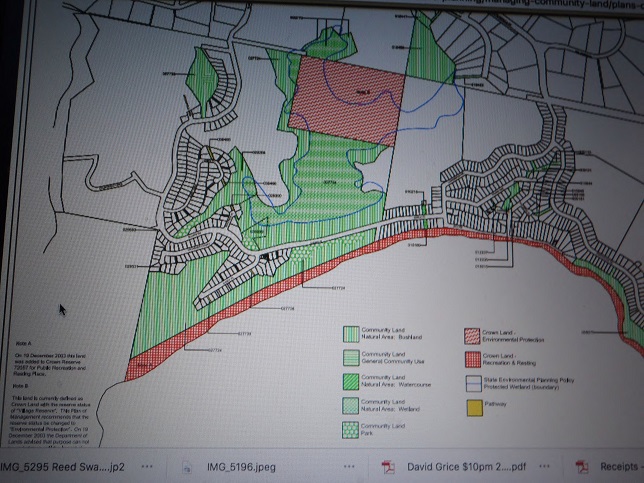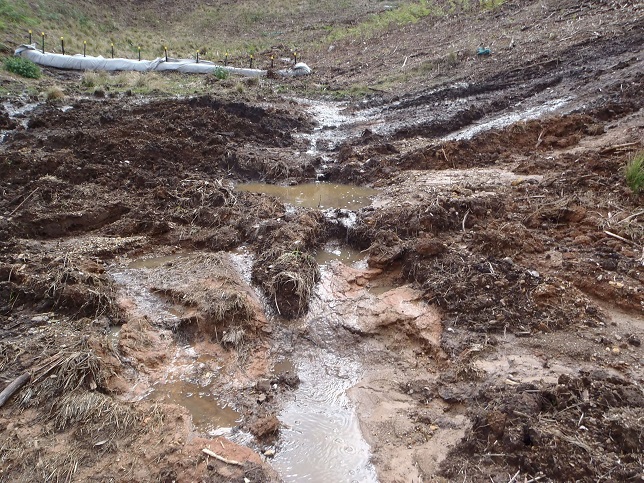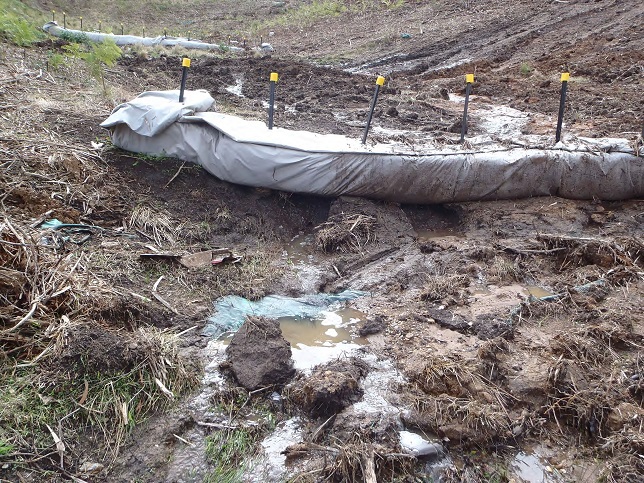Here is a perfect example of the RLS outcry that Council swore would never happen
- The Beagle

- Sep 30, 2018
- 5 min read
The Beagle Editor,
Yesterday I walked the western edge of Reed Swamp Lagoon at Long Beach (on the Eastern side of Blair Road, near where Ethel Close and Hilda Ct is proposed). The wetland is of major significance in the Shire, with a surface area of about 36 hectares, protected under State Environmental Planning Policy 14: Coastal Wetlands.
I was absolutely appalled at the lack of sediment control on this highly erodible and steep site. Not only that, but the developer has cleared right to the waters edge along several hundred meters of a SEPP 14 Coastal Wetland of major significance in the shire. The buffer zone that is important to the health of the lagoon has been destroyed. A very small section in the south of the affected area has been planted with new seedlings, however the species composition of this minor rehabilitation attempt does not replicate the original species composition or vegetation structure. Fencing (similar to what is required for dune stabilization) will be required by the developer to ensure rehabilitation of the destroyed areas has a chance to succeed.
Without exaggeration, a single heavy rainfall event will result in tonnes of sediment eroding into this State significant freshwater lake. The resultant turbibity and sudden significant nutrient load will have significant consequences on the survival of this wetland of State significance. There is already evidence of eutrophication of the lagoon from previous clearing events. The acid sulphate soils present will result in high acidity levels and further compromise the survival of this wetland.
I have written to Eurobodalla Council requesting that they please ensure immediate action is taken to prosecute those responsible and to rectify this disaster waiting to happen.
In my letter to the Council I have asked "is this yet again an example of how the DA system fails to protect our Nature Coast. I have also requested the Director of Planning be informed that this is but one example of the consequence of relying on the DA process and legislation to protect our Nature Coast, rather than sensible land use zoning. This example will be repeated throughout the shire if the RLS is implemented.

Above: some example photos of council owned (and some crown land) buffer width cleared of under story shrubs and macrozamia palms in to the edge of SEPP 14 Reedy Swamp Lagoon. The occasional erosion control efforts are totally inadequate given the slope, catchment size and highly erodible "powdered" soil.
For those who would like to examine this in more detail I have quickly extracted some relevant information below from the Long beach Foreshore and Wetlands Reserve Plan of Management, Dec 2002.
Reed Swamp Lagoon is a freshwater wetland listed as having State significance. Its significance is acknowledged by the lagoon’s listing as wetland of State significance under State Environmental Planning Policy (SEPP) No 14: Coastal Wetlands. The biological diversity of native wildlife and plants is rich and of high conservation significance and is likely to encompass a range of threatened or endangered species utilising the wetland. It provides important habitat and the potential for ecological protection and use as an educational resource, as well as being a habitat link and refuge.
The wetland itself is a reed swamp, with normal backshore inundation levels of 3.5m AHD (Webb, McKeown & Associates 2001). It comprises species such as Rushes (Juncus sp), Cumbungi (Typha sp), Twig Rushes (Baumea sp and Cladium sp), Spike Rushes (Eleocharis sp), Common Reed (Phragmites australis) and saw sedges (Gahnia sp). Fringing the wetland, some Kangaroo Apples can be found and Casuarina groves (Casuarina sp) line the wetland, forming a transition to the steep sclerophyll forest on the adjacent slopes, characterised by Spotted Gum (Corymbia maculata), Swamp Mahogany (Eucalyptus botryoides) and Burrawang (Macrozamia communis) dominated understorey (Eurobodalla Shire Council 1996, p.9).
Remnants of Coastal Wet Heath Forest also occurs along the edges of the Lagoon. Coastal Wet Heath Forest is restricted to acid sulphate soils above semi saline flats along edges and low lying tributaries of coastal lagoons Coastal Wet Heath Forest is low-medium forest up to 10 m tall, dominated by Swamp Oak (Casuarinas glauca). Paperbark (Melaleuca ericifolia), Boobialla (Myoporum acuminatum), Sydney Golden Wattle (Acacia longifolia var.longifolia and Parsonia straminea occur in the intermediate shrub layer. The groundcover is variable and includes Cutting Grass (Gahnia clarkei), along with native sedges such as (Baumea juncea) and low herbs such as Native Violet (Viola hederacea). This vegetation community is considered vulnerable by NPWS.
Additional soil and sediment control devices had been planned for future stages of the development. The very limited installed sediment control measures appear to be failing and little has been done to ameliorate the situation. The potential for this environmental problem had been recognised at least as early as 1996. The construction of adequate sediment and erosion control measures was imposed by
Council as a condition of consent for the development of Long Beach Estate, in order to prevent the sedimentation of waterways and to control erosion both during construction and in the long term (Eurobodalla Shire Council 1990). This is being flagrantly ignored.
Increased turbidity and sedimentation negatively impacts on the wetland in a number of ways. Firstly, turbid waters allow little light to penetrate the water, which has negative implications on the ability of wetland vegetation to photosynthesise. This may result in the vegetation being stressed and could result in degradation or loss of reeds and aquatic vegetation in the wetland. At the same time, weeds are favoured and may out-compete native vegetation which results in loss of habitat, food and shelter for native species. Weeds are further favoured by increased nutrient loads and toxins which could enter the lagoon as run-off from roads and private properties, especially where vegetated buffer zones are of inadequate width, and not enforced or adequately maintained (for example through clearing of vegetation for views). Lastly, suspended sediments in the wetland will settle eventually, which will change the underwater topography and depth of water levels and could lead to the siltation of the lagoon or parts of it in the long term. This will have significant ramifications for the species distribution and composition in Reed Swamp Lagoon. All combined together, these processes will most likely result in the loss of the natural character, biodiversity, habitat value and ecological significance of the wetland, producing an urbanised and irreversibly impoverished and degraded lake .
Long Beach Foreshore and Wetlands Reserve is either community land under the ownership of Eurobodalla Shire Council or Crown Land managed by Eurobodalla Shire Council on behalf of the Minister for Crown Land. Council granted development consent for the subdivision of Long Beach Estate which included the dedication of reserves to Council as conditions of consent. The original developer of Long Beach Estate dedicated to Eurobodalla Shire Council free of cost much of the land within the Long Beach Foreshore and Wetland Reserve in recognition of the environmental sensitivity of the wetland and the greater community desire for foreshore access in accordance with the conditions of consent and the requirements of the Long Beach Development Control Plan. These conditions of consent are being flagrantly ignored.
Above: additional photos of the erosion failures after a small rainfall event. Also photos of maps showing position of most clearing and the ownership.
Name and address supplied




